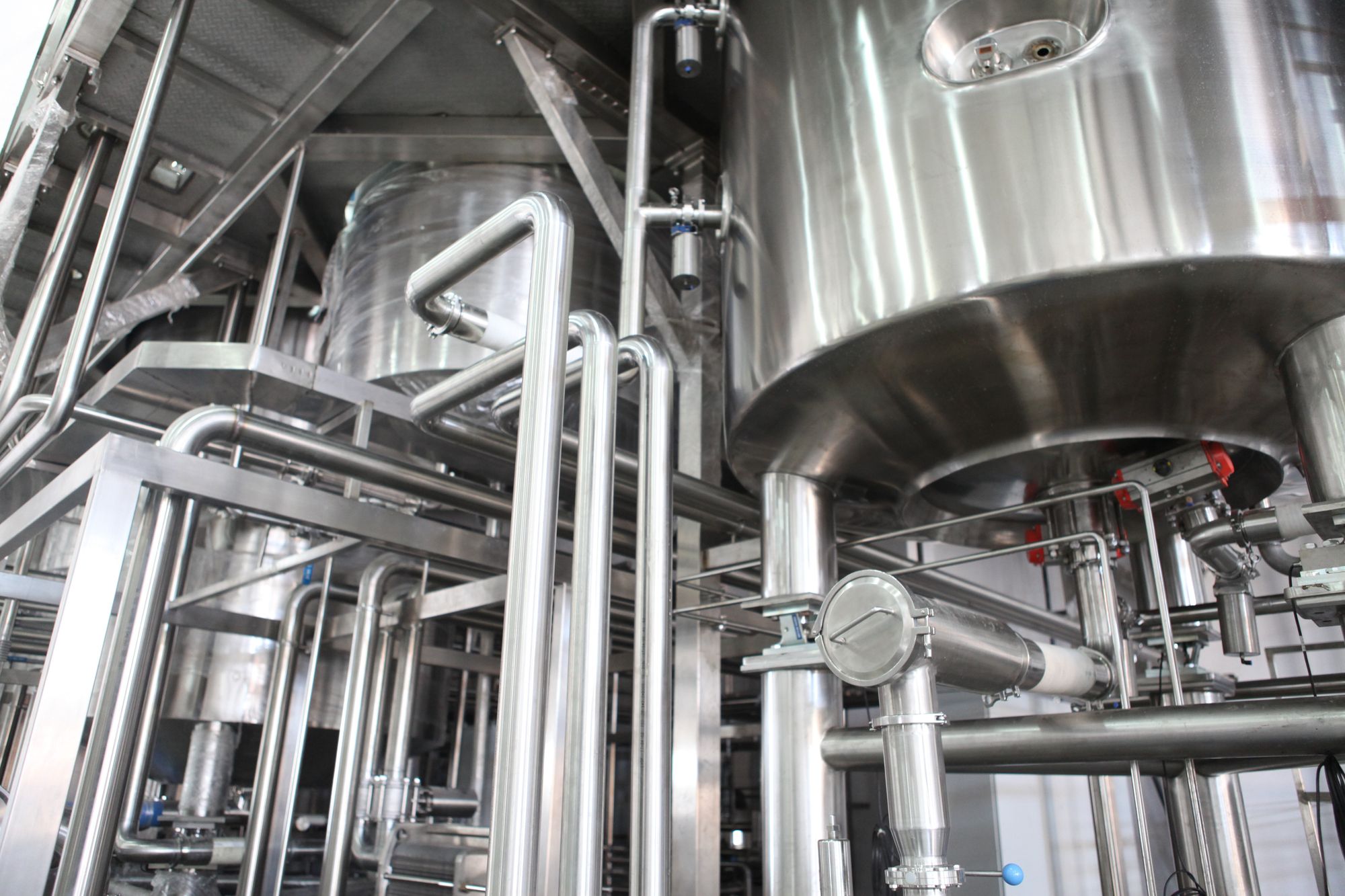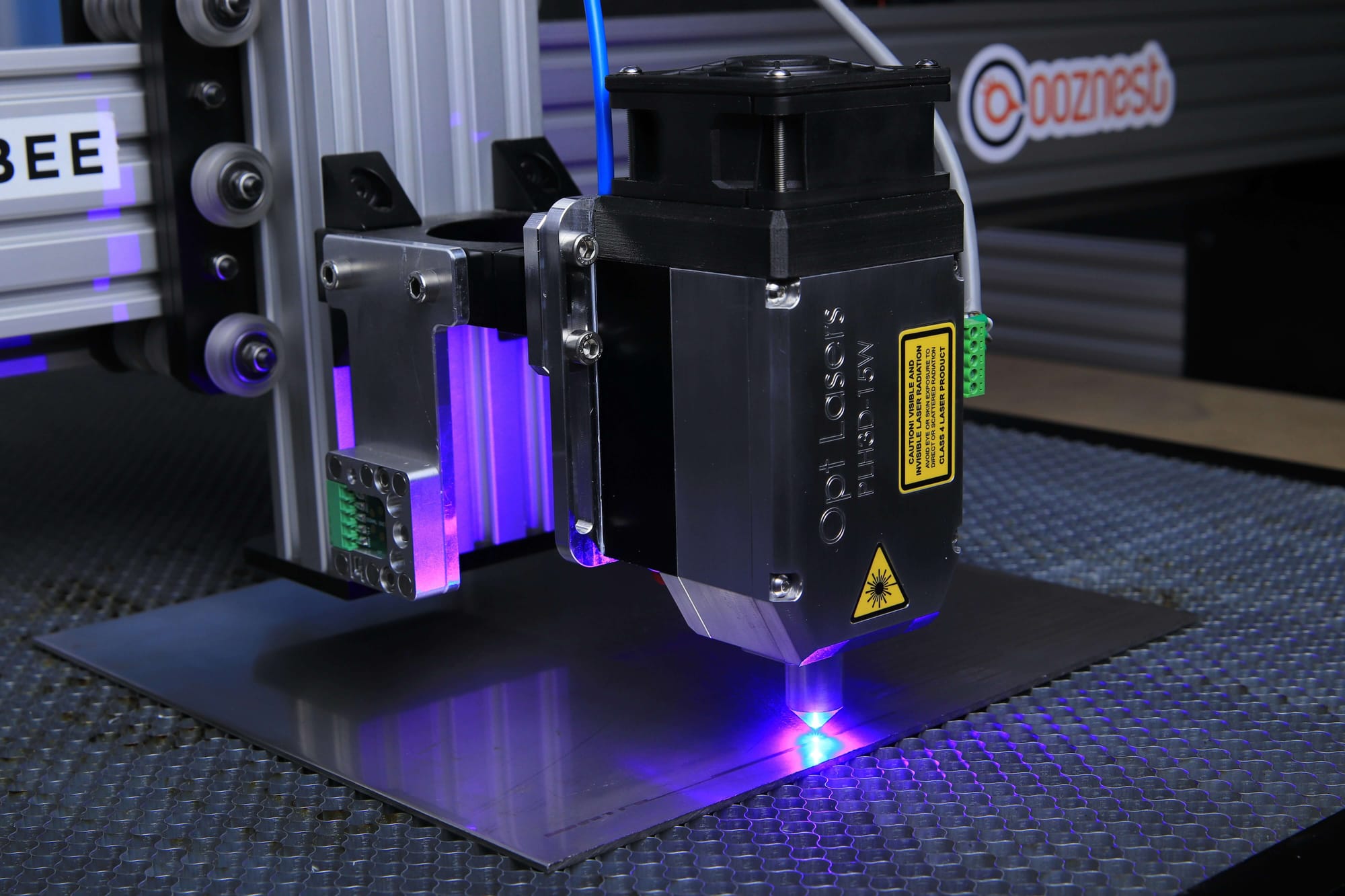According to Gartner, the global manufacturing operations management (MOM) market size is expected to reach $6.8 billion by 2023. Further on, research by KPMG suggests that 73% of manufacturers are using artificial intelligence (AI) to improve production planning.
This is supported by the results of a survey conducted by McKinsey, according to which 78% of manufacturers are using advanced analytics to improve production planning. Lastly, according to a survey by PWC, 87% of manufacturers are using cloud-based solutions to improve production planning.
While these statistics have highlighted the importance of production planning, it has also highlighted its most recent trend of adopting cloud-based software to assist them in it.

Production planning is the act of developing a guide for the design and production of a given product or service, thereby making your production process as efficient as possible.
It thus makes complete sense that the adoption of software that will automate your key business processes will only help you reach your objective faster and more efficiently.
The main purpose of production planning is to optimize your manufacturing process, consequently reducing your manufacturing costs and maximizing your net revenue and return on investment.
Additionally, production planning helps in creating a process that takes care of customer-dependent processes like timely delivery, as well as customer-independent processes like production cycle time.
Thus, for the overall productivity and profitability of your business, it is important for you to have a complete understanding of production planning. This article will help you with that by covering the following topics:
- What is Production Planning?
- Difference between Production Planning vs. Production Scheduling
- Why is Production Planning Important?
- 5 Types of Production Planning
- 5 Steps to Make a Production Plan
- 3 Common Production Planning Mistakes
- Which Production Planning KPIs Must You Track?
- What are the 3 Most Common Production Planning Tools?
- How can Deskera Help You with Production Planning?
- Key Takeaways
- Related Articles
What is Production Planning?
Production planning is the process of deciding how a product or service will be manufactured before the manufacturing process begins. Thus, it is about how you plan to manage your supply chain, raw materials and components, employees, and the physical space where your manufacturing processes take place.
It is thus an important process for manufacturers like you as it affects other important aspects of your business like:
- Supply chain management
- Production scheduling
- Material requirements planning
- Production lead time
- Resource capacity planning
Considering that production planning will also spell out everything surrounding your production targets, it will also map out all the operational steps involved and their dependencies in reaching them.
The primary goal of production planning is to design the most efficient way to make and deliver your company’s products at the desired level of quality. In fact, a well-designed production plan will help your company in increasing its output and save money by developing a smoother workflow and reducing waste.
As is evident, production planning is a broad discipline that involves much more than a focus on manufacturing process efficiency.
In fact, production planning activities include demand forecasting as well so that you will be able to determine the right mix of products to meet customer needs. Additionally, it will also help you in choosing the optimal approach to building those products.
Also, production planning will assess the resources needed to meet production goals and lay out in detail all the operations in the production process.
Lastly, production plans must include the flexibility to make operational adjustments when problems occur- such as staffing shortages, supply chain problems, and machine breakdowns.
Difference between Production Planning vs. Production Scheduling
Production Planning: Production planning is the process of determining the number of goods and services that an organization will produce in a given period of time.
It involves making decisions on the number of resources, such as raw materials, labor, and capital, that will be required to meet the desired production output.
It also involves the selection of production processes, the determination of production schedules, and the coordination of activities within the production process.
Production Scheduling: Production scheduling is the process of organizing and planning the sequence of production operations and activities in order to ensure that the desired output is achieved within the specified time frame.
It involves the allocation of resources, the determination of task sequences, and the creation of production schedules.
It also involves the coordination of activities within the production process in order to ensure that the desired output is achieved in the most efficient manner possible.
Therefore, while production planning provides an overview of what your company plans to do, production scheduling creates a more detailed view of exactly how your company will do it.
This means that the production schedule will describe when each step of your production plan will occur and consequently by using which resources and how.
Why is Production Planning Important?
Considering that a well-constructed production plan will help you boost your revenue, net profits, financial KPIs, operational metrics, and even customer satisfaction, production planning is vital for your business and its success.
In fact, a poorly designed production plan can cause production problems and even carries with it the risk of sinking your company.
Some of the specific benefits of production planning are:
Knowledge
Your production plan will provide you with a framework that will help you understand your resources and the production steps that you will need to undertake to meet your customers’ needs.
Additionally, it will also help you understand the potential problems that may occur during production and how you can mitigate them. This will help you improve your cash flow and the health of your financial statements. It will also help you improve customer retention.
Efficiency
One of the other benefits of production planning is that it will help you reduce bottlenecks and help minimize costs. This will thus keep your net working capital stronger and prepared for other uses that will lead to the growth and development of your business.
Additionally, production planning will also help you ensure that your products are of high quality and that your expenses do not exceed the budget.
Lastly, it will also help ensure that your resources are used efficiently and that wastage is avoided. In fact, production planning will also help in reducing manufacturing lead times through efficient planning and processes.
Customer Satisfaction
With production planning, you will be able to ensure that your company is able to make and deliver products to customers on time. This will lead to strong customer loyalty, as well as a positive brand image that will encourage returning customers as well as increased sales referrals.
5 Types of Production Planning
Depending on the production method that your company uses, as well as on other factors like product type, order size, and equipment capabilities, the design of your product plan will be decided. The five types of production planning that are used most frequently are:
Batch Production Planning
This type of production planning refers to when you need to manufacture identical items in groups or in a continuous process rather than one at a time.
Batch production often leads to increased efficiency for several businesses. This leads to increased gross profits, reduction in the cost of goods manufactured, and better customer satisfaction.
For example, a clothing manufacturer making goods for the summer might first set up its cutting and sewing machines to make 500 red t-shirts, then switch to navy fabric and thread to make 400 tank tops.
A good production plan for batch processing is one that looks out for potential bottlenecks or delays when switching between batches. This will help you avoid additional expenses and maximize your profitability as well as productivity.
Job - or Project-Based Planning
Used most often by small and medium-sized businesses, here, the focus is on the creation of a single item by one person or team. Typically, job or project-based planning is used when there is a specificity of each client’s requirements, thereby making it difficult to make the products in bulk.
Several construction businesses and makers of custom jewelry and dresses adopt this production planning method to get the job done.
Flow Production Planning
Flow production is also known as continuous production, and here, the standardized items are mass-produced continuously on an assembly line. This method is most often used by large manufacturers who want to create a constant stream of finished goods.
In flow production planning, it is important that each item moves seamlessly from one step along the assembly line to the next. This will help avail the benefits of adopting flow production, which reduces costs and delays, especially when there is a steady demand for your products.
Based on the steady demand for your products and adoption of flow production, it will become easy for you to determine your needs for materials, equipment, and labor at each stage along the assembly line. This will help you streamline your production and avoid delays.
For example, companies in the automotive industry and makers of canned food and drinks use this method.
Process Production Planning
This is a method wherein there will generally be different types of machinery that are completing separate tasks to put together the finished goods.
Mass Production Planning
While this method is similar to flow production planning because it is primarily focused on creating a continuous flow of identical products, this happens at a much bigger scale. This means that by implementing this method, you would be able to cut your production costs through economies of scale.
This method will be the aptest for you when the uniformity of your products is as important as the efficiency of your production process.
5 Steps to Make a Production Plan
Production planning is a complex and dynamic process that starts with forecasting and includes process design and monitoring. The five typical production planning steps are:
Forecast Product Demand
The first step to production planning is to estimate how much of each product you will need to produce over a given period of time.
Your historical data will be able to help you with forecasting, however, during demand planning, and consequently production planning, you will also need to take other demand-affecting factors like market trends and the economic situation of your buyer personas into consideration.
Implementing a demand planning software like Deskera MRP, which will also be able to help you with production planning, will help you make more informed decisions. This, in turn, will lead to increased profits, productivity, and more satisfied customers.
Map Out Production Steps and Options
In this step of production planning, you will be determining the resources, steps, and processes that you will need to produce the required output in a given time period. Here, you can also examine different options available for achieving your production goals, like considering outsource manufacturing.
One of the added benefits of production mapping is that it will help you identify which steps are interdependent and which can be performed simultaneously.
For example, you want to produce 1,000 children’s bicycles. Manufacturing the bicycle frames consists of a series of steps that must happen in sequence - like cutting metal tubes, welding, and painting, etc. However, there are other activities that can happen simultaneously, like assembling the wheels.
Lastly, this step will also help you determine if you have all the necessary resources and the right equipment. It will also help you identify what you will need to do if your machine breaks down. In fact, production mapping will also help you determine whether your suppliers are meeting your demand on time or not.
Thus, production mapping will assist you in inventory management, keeping a check on your inventory costs, and shop floor scheduling. It will also help you improve the ratio of your operating income to operating expenses.
Choose a Plan and Schedule Production
After comparing the cost, the time required, and the risks for each option, in this step, you would select a production plan to implement. Sharing the selected plan as an executive summary with all the necessary stakeholders will help you ensure a smoother production process, as they will all be aware of what is going to be needed and when.
Then, you will create a detailed production schedule that will lay out in detail how your company will execute the plan, including the resources and timing for each step. In fact, this will set the basis for the master production schedule while shortening your order fulfillment cycle time.
Monitor and Control
Once you have completed the above steps, your production will start. This means that you will now need to track performance and continuously compare it against the target described in the production plan.
The benefit of doing this is that it will help you ensure that you are adhering to the plan as well as the schedule. Additionally, it will also help you detect any issues as soon as they pop up, letting you address them quickly, thereby mitigating the losses they might have caused.
Adjust Accordingly
It is going to be inevitable for your production to be affected by events that you cannot plan for or predict. Some of those events include supply chain lags, client specifications, equipment failures, and worker illness.
Additionally, after seeing your production plan in action, you might have even identified ways to improve it and make it more profitable.
Thus, it is crucial that you keep your production plans flexible enough to allow for adjustments when needed. This will help you improve their efficiency and profitability by huge measures.
3 Common Production Planning Mistakes
One of the best ways to avoid or mitigate problems once production has started is by being aware of the potential pitfalls ahead of time. The three most common production planning mistakes are:
Not Anticipating Hiccups Along the Way
It is very likely that the plans will go awry in any complex production process. It is thus important that your production planning includes risk management strategies. This should also include backup plans that your company can rely on in case any problem arises. If you fail to do so, you might face serious problems.
For example, if a machine breaks on the line and you have not kept aside a budget for repairs and overtime of the workforce, then this issue will lead to financial strain on your company’s resources.
Keeping Your Distance
While implementing production management software will lead to you getting real-time visibility into your company’s production status, you should make sure that this information is supported by in-person visits to the production line.
These visits will give you valuable insights into how production is working in practice. These insights might prove useful in changing your production planning to make it more profitable and productive.
If you or your employees continue to only sit behind the desk, then you will be missing out on these valuable insights, which will even improve your several relevant key performance indicators.
Failing to Maintain Equipment
It is crucial that you regularly maintain your company’s equipment because this is what is making your production happen. Thus, you must have a strategy in place to track the usage, as well as a budget to pay for the regular preventive maintenance that will ensure that they keep running smoothly.
Which Production Planning KPIs Must You Track?
KPIs or key performance indicators are those important metrics that will help your company track the health of its production processes.
By monitoring KPIs and comparing them to target values defined in your production plans, you would be able to assess whether your production is on track or not.
Additionally, you would also be able to identify problems that might need addressing.
Some of the typical production planning KPIs that you must track are:
Downtime
This is one of the key efficiency metrics that will track the percentage of time that production is not occurring during the scheduled operating hours. Some of the reasons why this is happening are:
- Machine breakdowns
- Tool adjustments
- Accidents
And so on.
While some of the downtimes might be essential, like, for example, downtime for machine maintenance, generally, the lesser the downtime, the better it is.
Setup Time
This is also known as the changeover time and is the amount of time it takes to switch between jobs. Setup time affects overall productivity because, during these periods, production is halted.
Thus, it is important that production schedules take into consideration how much time and effort it takes to reconfigure production for each job. This includes but is not limited to the following:
- Changes to the equipment
- Changes to the raw materials
- Changes to the workforce
In order to increase your efficiency, it is important that you design your production schedules such that they minimize changeover time.
Production Rate
In a manufacturing environment, this is typically measured as the number of units produced during a specific period. The advantage of comparing the actual production rate for each process with its planned rate will help you identify your strengths as well as weaknesses. It will also help you to address your problems.
Overall Equipment Effectiveness (OEE)
This is the measure of the overall manufacturing productivity that accounts for quality, performance, and availability. The formula for OEE is:
OEE = Quality x Performance x Availability
Typically, quality is measured as the percentage of parts that meet the quality standards. Performance is how fast a process is running compared to its maximum speed, which is expressed as a percentage. Availability is the percentage of uptime during a company’s scheduled operating hours.
Thus, you can increase your OEE by lowering downtime, reducing waste, and maintaining a high production rate.
Rejection Rate
This is the percentage or number of products that have failed to pass quality checks. Depending on the nature of the product and the problem, it may be possible to salvage some of the rejected items by reworking them. However, there may be others that need to be scrapped.
On-Time Orders
Production delays can be costly in terms of reputation as well as money. This is because if you are able to generate products on schedule, then there would be fewer chances of you needing to use costly expedited shipping or other emergency measures to meet deadlines.
Additionally, delivering orders on time will keep your customers happy, which means that they are more likely to continue doing business with your company while also helping in your company’s positive brand awareness.
What are the 3 Most Common Production Planning Tools?
To build their production plans and track their progress, businesses tend to rely on a variety of tools. These tools range from visualization tools to sophisticated software that automates several of the involved steps. The three most common production planning tools are:
Gantt Charts
A Gantt chart is a detailed visual timeline of all the tasks scheduled for a particular job. This chart is an integral part of manufacturing and several other industries.
Considering that production planning involves coordinating and scheduling several tasks of your business, Gantt charts will visually represent when each task will take place and how long it will last.
However, manually creating and updating Gantt charts to reflect your complex, ever-changing production schedules is not only time-consuming but also an error-prone job.
Spreadsheets
While small companies start tracking their simple production plans using spreadsheets, for most companies, the inherent complexity of production planning quickly outstrips the capabilities of spreadsheets.
Production Planning Software
Production planning involves a wide range of activities, including but not limited to forecasting, tracking inventory, supply chain management, and scheduling jobs. This requires information from across your company and beyond.
Additionally, production planning information is integral to business operations and is used by other groups within the company, including finance.
Taking all of this into account, using MRP software like Deskera, which includes production planning software, and also provides a single solution for managing the entire business, is the best choice you can make for your company.
How can Deskera Help You with Production Planning?
As a manufacturer or retailer, it is crucial that you stay on top of your manufacturing processes and resource management.
You must manage production cycles, resource allocations, safety stock, reorder points, and much more to achieve this.
Deskera MRP is the one tool that lets you do all of the above. With Deskera, you can:
- Track raw materials and finished goods inventory
- Manage production plans and routings
- Maintain bill of materials
- Optimize resource allocations
- Generate detailed reports
- Create custom dashboards
And a lot more.
It is also possible to export information and data on Deskera MRP from other systems. Additionally, Deskera MRP will give you analytics and insights to help you make better decisions.
So go ahead and book a demo for Deskera MRP today!
Key Takeaways
Production planning is the process of deciding how a product or service will be manufactured before the manufacturing process begins. Thus, it is about how you plan to manage your raw materials and components, supply chain, employees, and the physical space where your manufacturing processes take place.
The key benefits of production planning are:
- Knowledge
- Efficiency
- Customer satisfaction
The five main types of production plans are:
- Batch production planning
- Job or project-based planning
- Flow production planning
- Process production planning
- Mass production planning
The five steps of making your production plan are:
- Forecast product demand
- Map out production steps and options
- Choose a plan and schedule production
- Monitor and control
- Adjust accordingly
The three most common production planning mistakes are:
- Not anticipating hiccups along the way
- Keeping your distance
- Failing to maintain equipment
The key production planning KPIs that you must track are:
- Downtime
- Setup time
- Production rate
- Overall equipment effectiveness (OEE)
- Rejection rate
- On-time orders
Implementing software like Deskera MRP will ease production planning for you while also ensuring its efficiency and, therefore, productivity and profitability.
Related Articles












